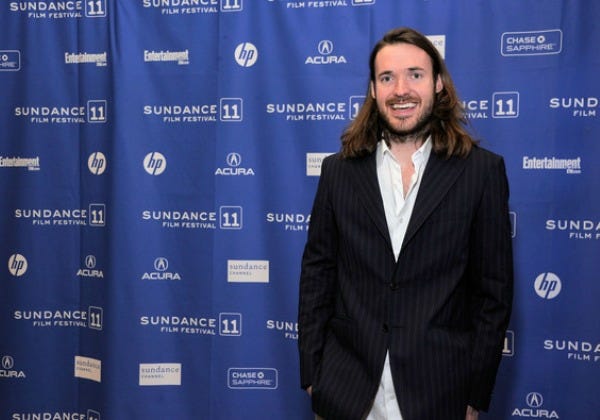Mike Cahill, "Another Earth"

“Another Earth” is a shot of originality in the arm of the science-fiction genre. A refreshing change of direction from bloated yet shallow spectacles like “Transformers,” it is a quiet, intimate film that uses sci-fi/space elements to stir its already simmering drama pot. Its ever-hovering parallel Earth never distracts from the human conflicts unfolding in its shadow.
The mirror planet is more than a mere visual marvel. It is a symbol of hope and redemption. For Rhoda (co-writer Brit Marling), it embodies a chance for another life — a chance to possibly find the family she killed in a car accident. The planet is a perfect mirror of present reality — like the film itself.
Writer-director Mike Cahill sat down with the Yap for a few minutes recently to discuss “Another Earth” (his debut film) and the sci-fi genre’s ability to reflect contemporary consciousness, among other things.
The basic premise of “Another Earth” is like that of a high-concept sci-fi film, but it doesn’t play out like one. It’s far from a traditional genre film. So, I’m curious: Were you inspired by any specific films of the genre or are you a sci-fi fan?
I’m a huge sci-fi fan of the old school nature. I like films like “Solaris” and “2001” — thinking man’s sci-fi films. I also like Krzysztof Kieslowski's films, which aren't sci-fi, but they expose the magic within the mundane. What’s great about sci-fi is that it externalizes internal monologues and literalizes drama. For example, in “Another Earth,” the idea of second chances and meeting yourself is made possible by a duplicate Earth. In how it externalizes what is interior, sci-fi brings us closer to who we are. CGI defines so much of what we know as sci-fi, but I like films that are more about the ideas than the spectacles.
How did the idea for the film come about, and how did Brit Marling become involved?
It came from the idea of meeting oneself. I did a short film where I interviewed myself. It was part of a 90-minute sci-fi triptych, of which “Another Earth” was the third film. I met Brit at Georgetown University, and she starred in some of my short fiction films. We were so fascinated by the world of “Another Earth” that we decided to explore it more and extrapolate it into a feature film. We all wonder what it would be like to meet ourselves, and in “Another Earth,” that internal monologue becomes external.
Rhoda is far from the damsel in distress most actresses are condemned to play. Were you and Brit conscious of going against the norm in creating a stronger, more stoic female character?
Absolutely. While trying to work as an actress, Brit was always getting auditions to play the girl on the side or the girlfriend of the main dude. So we were definitely conscious of creating a stronger, more independent character. Rhoda doesn’t have any self-pity, there’s never a shred of “woe is me.” She carries the guilt (of the car accident) on her own shoulders. Her guilt is the antagonist of the movie and she approaches it like a warrior.
What are your expectations for the film and plans for the future? Do you have any other ideas or projects lined up?
The film has already exceeded all expectations. The fact that it got into Sundance and other prestigious festivals is a dream come true. Right now, I'm working on a film about reincarnation, another sci-fi thing.
"Another Earth" is now playing in limited release. It will open in Indianapolis (The Film Yap's city of origin) on August 12 at Landmark's Keystone Art Cinema.


